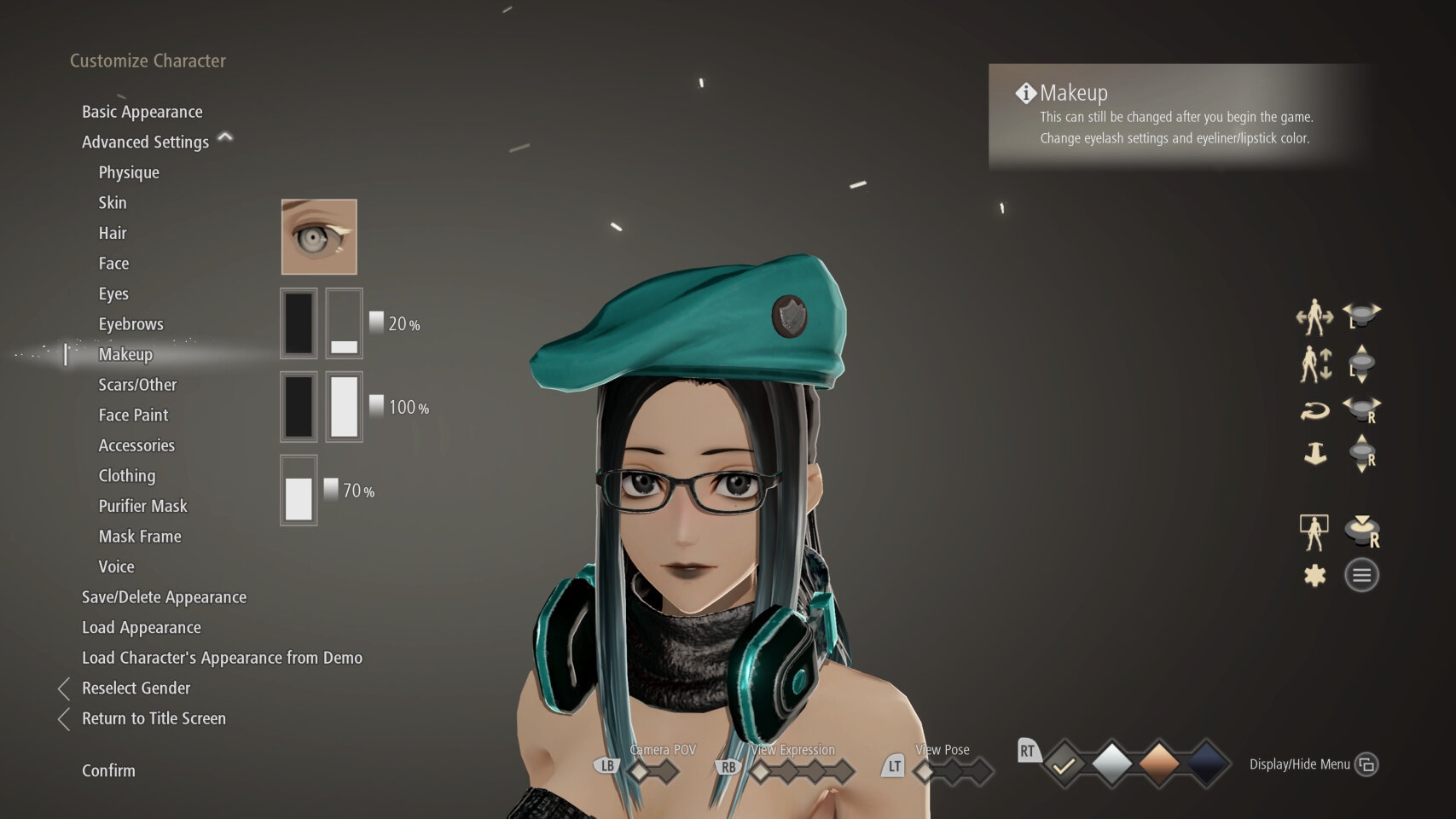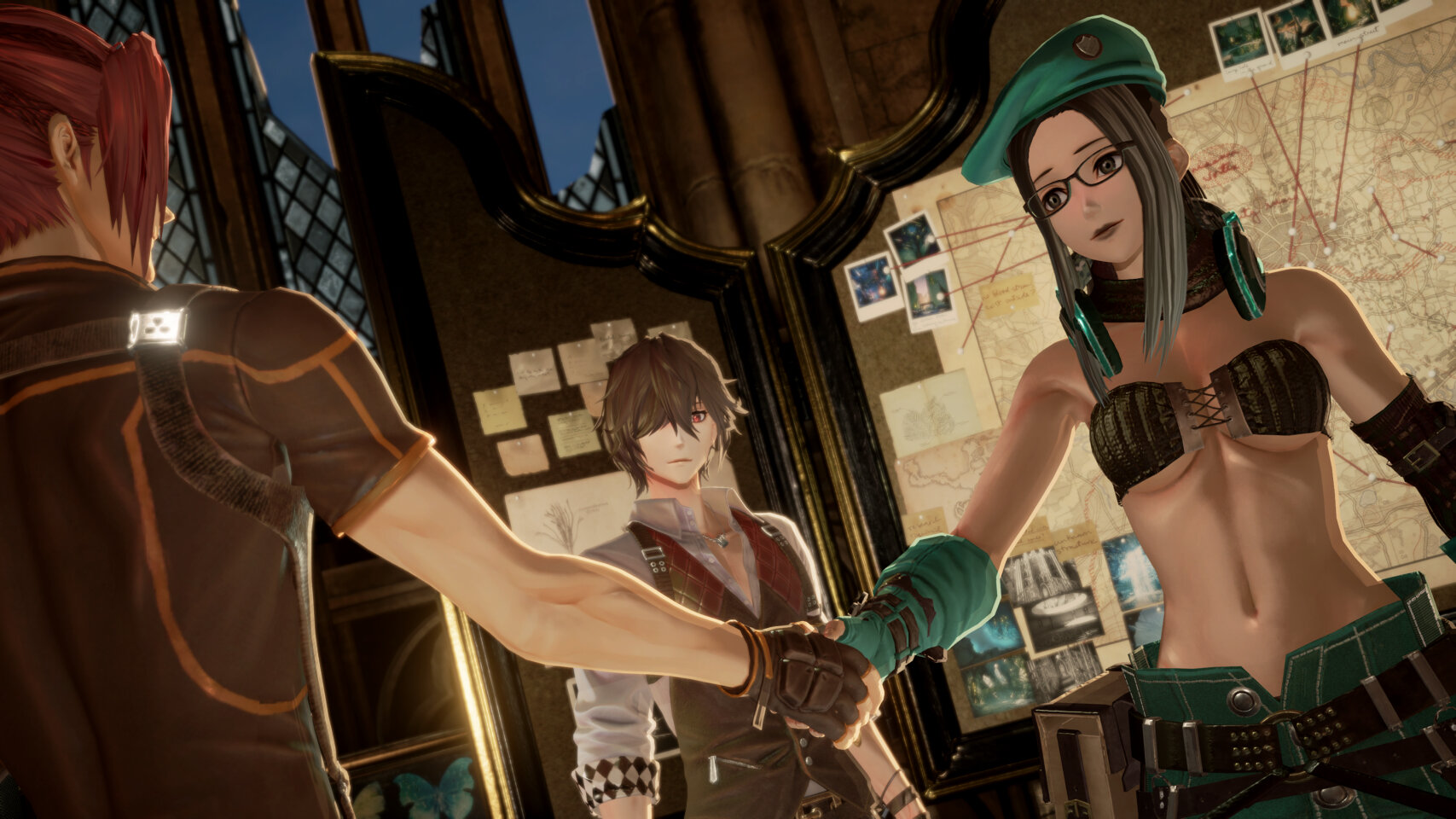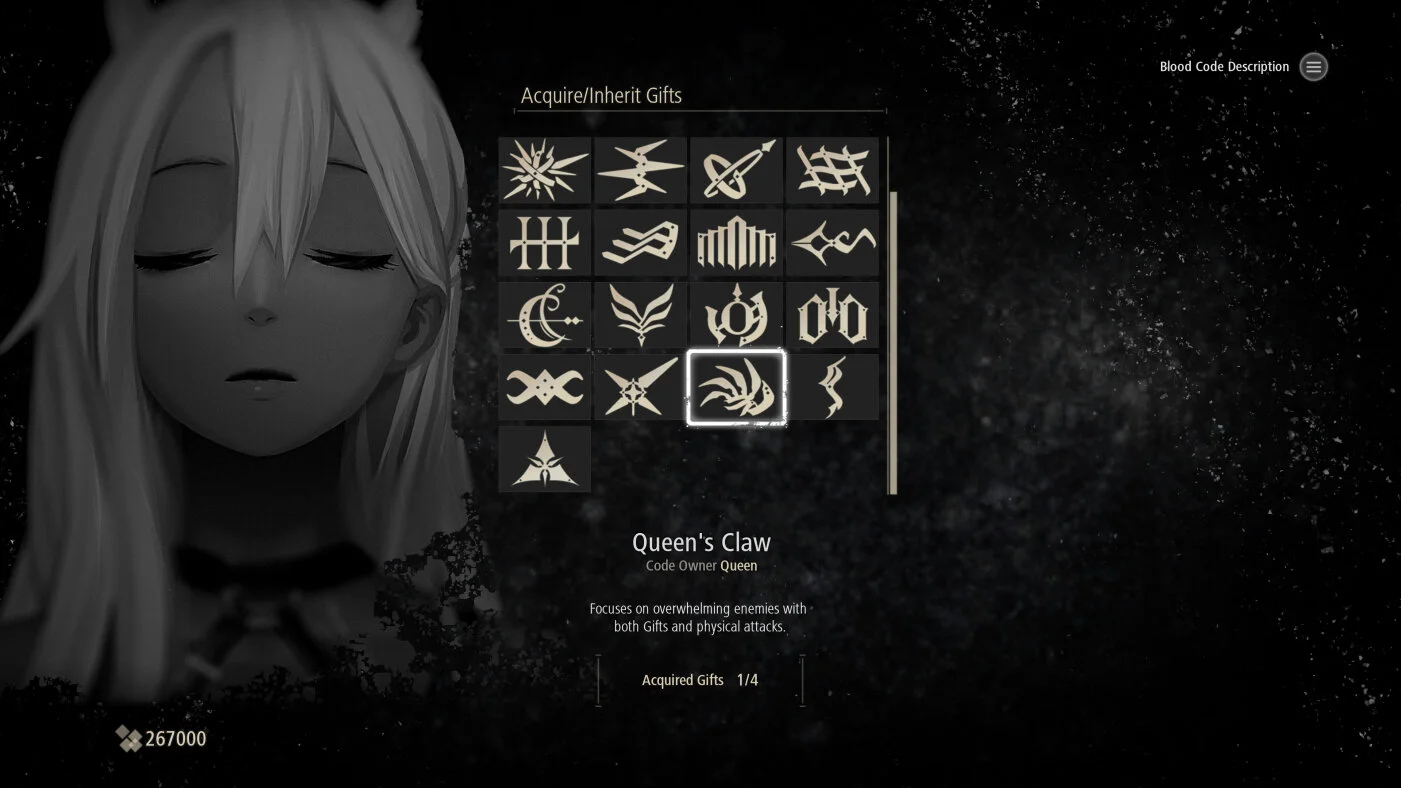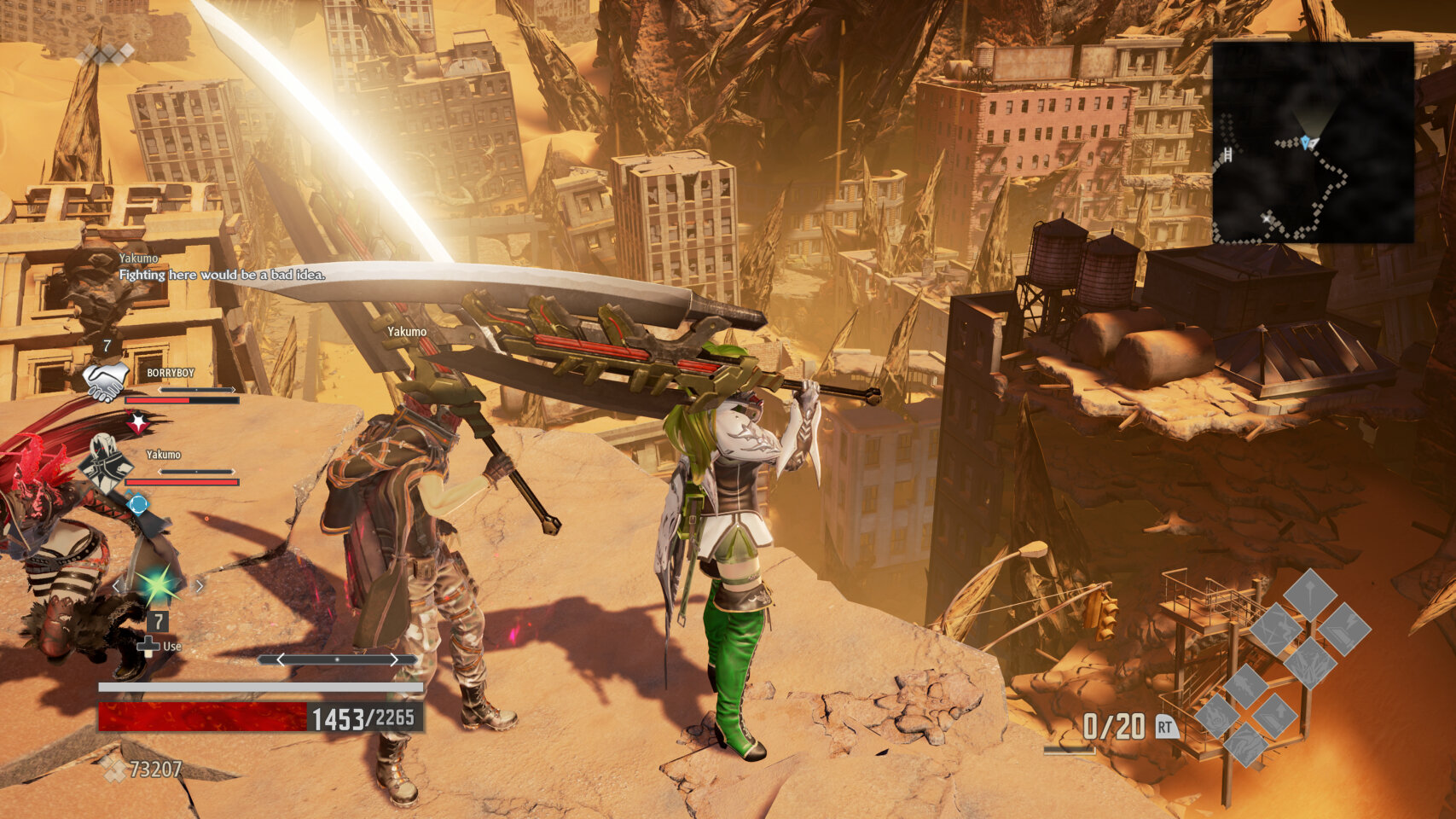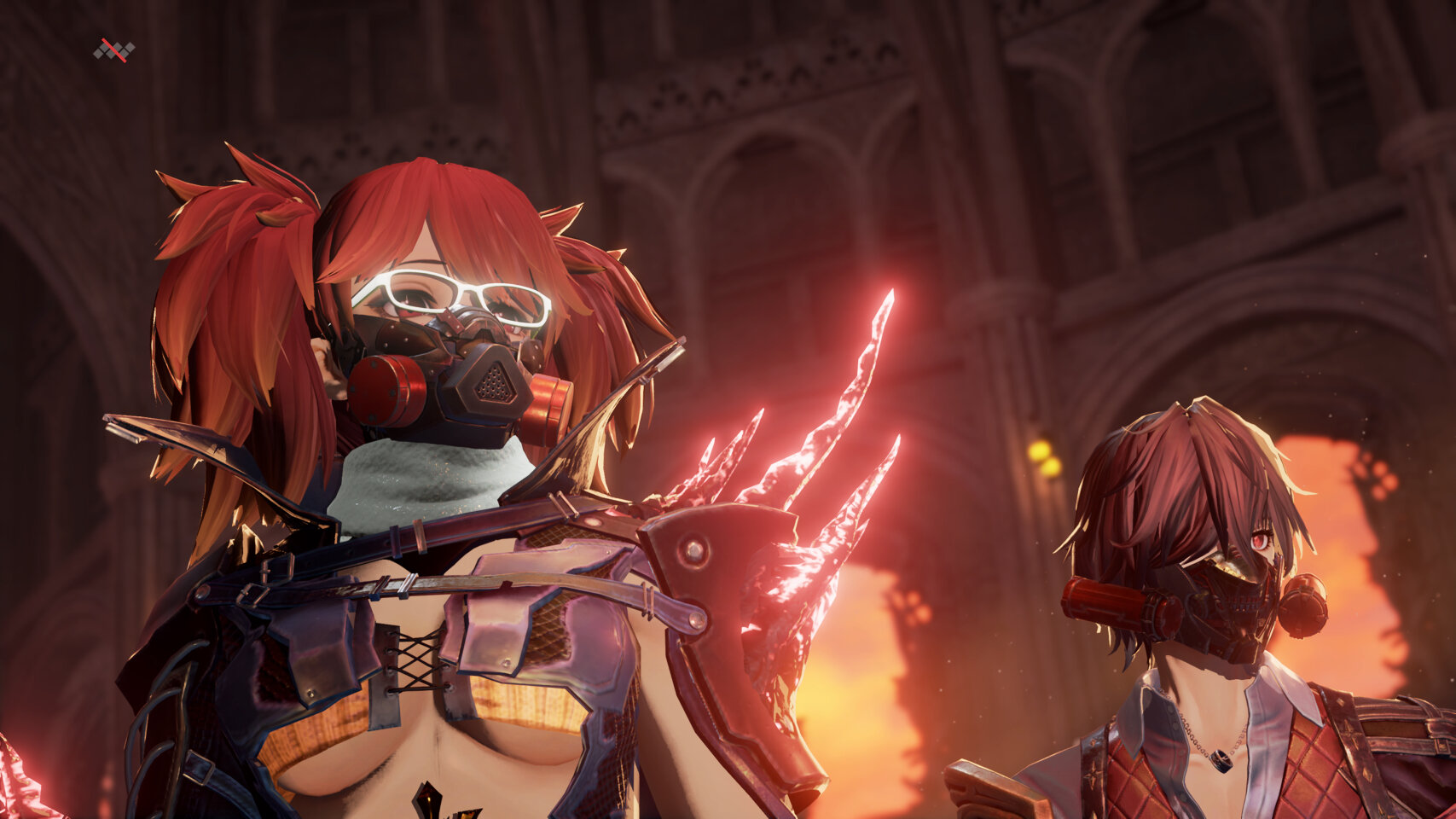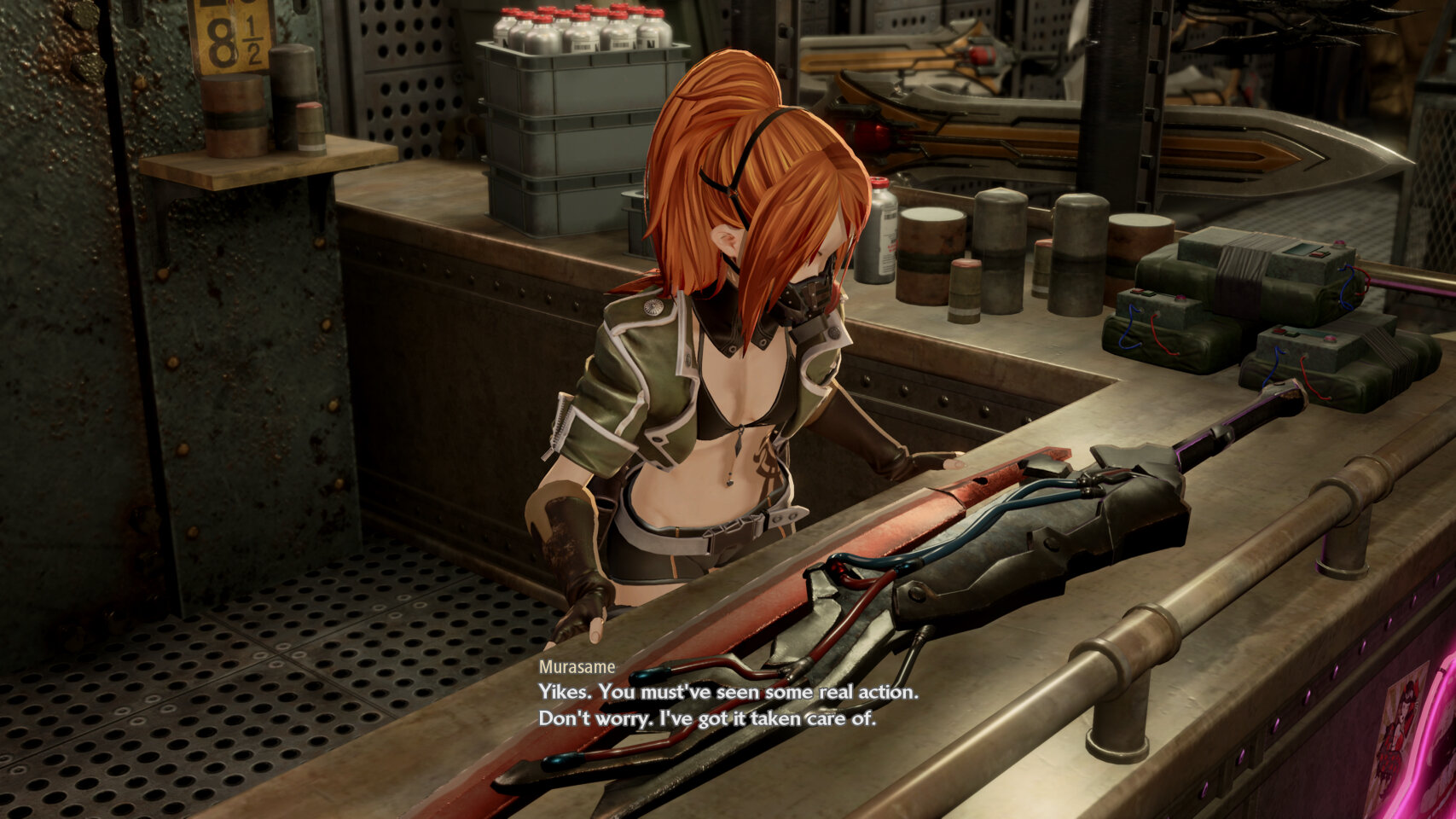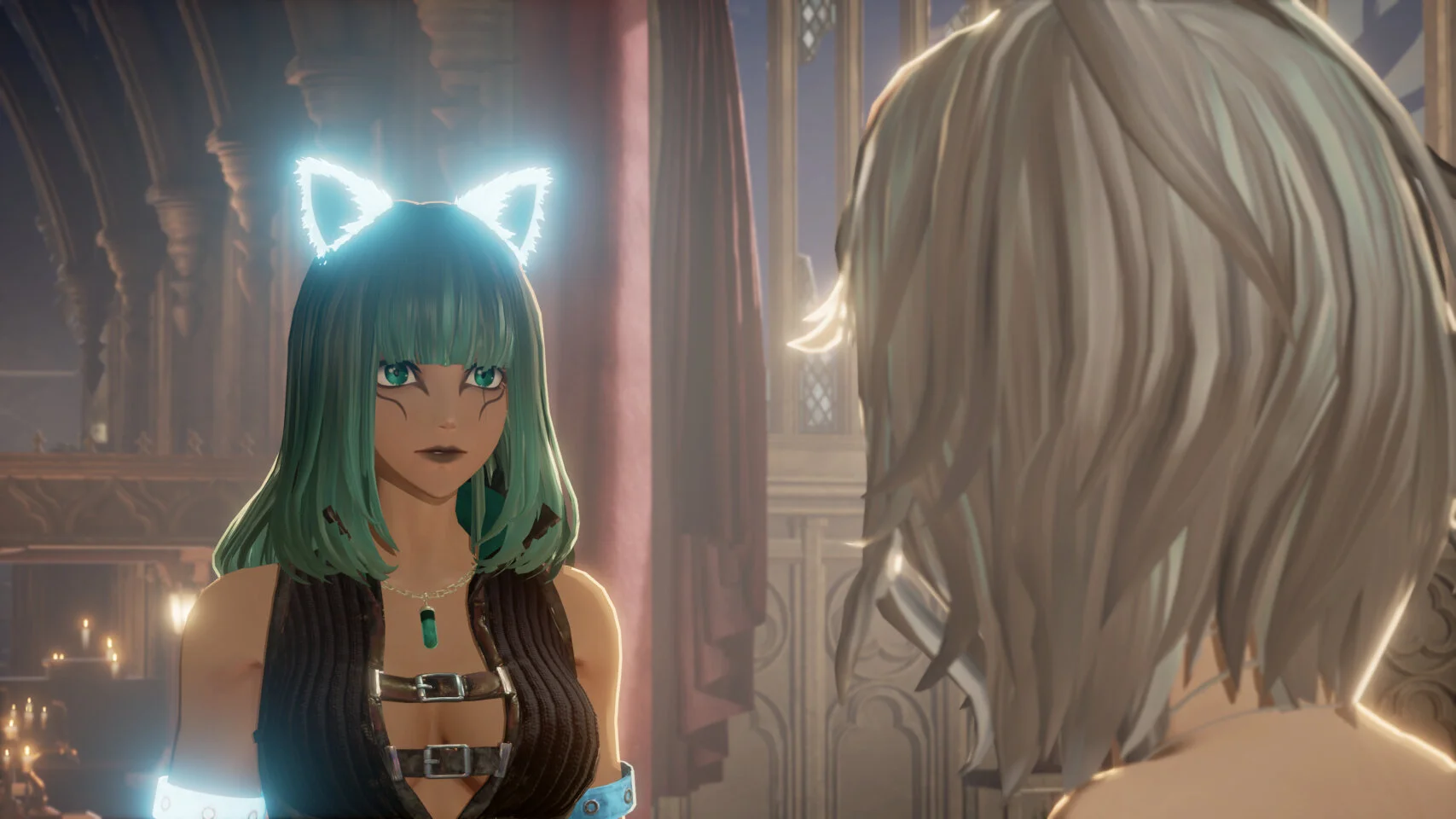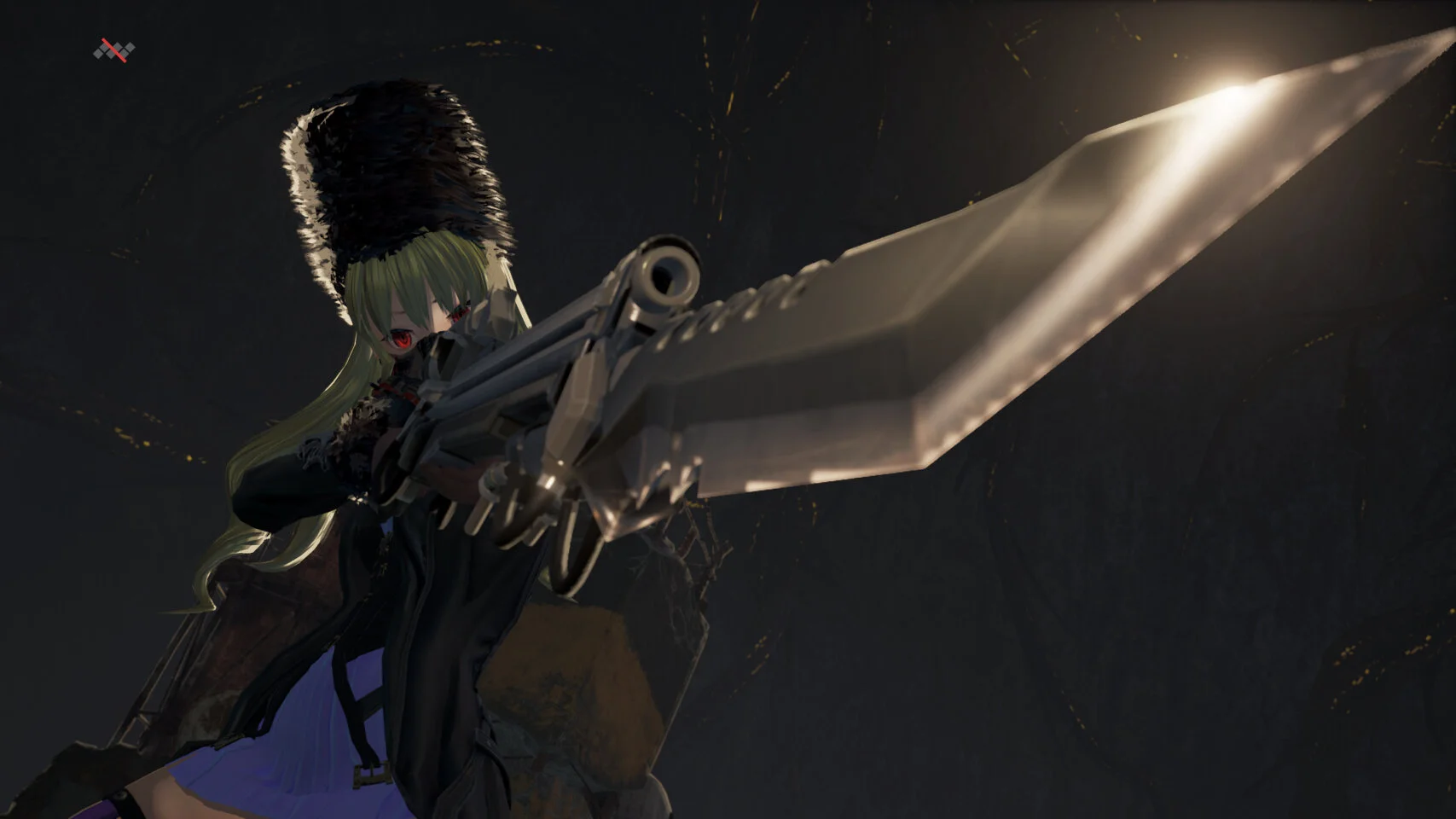Try not to suck.
Despite everything Code Vein attempts to do otherwise, calling it anime Dark Souls feels like a pretty on the nose way of describing it. Developed by the same studios that brought us the God Eater trilogy, this anime aesthetic vampire romp through a post-apocalyptic world is fairly enjoyable but suffers from a drab story that attempts to add emotional weight through a series of drawn-out memories that move at a snail’s pace. Don’t get me wrong, I had a good time pushing through the 30+ hours I sunk into the title, but its story isn’t why I kept playing.
Adapting the Dark Souls formula has been something of a trend in the past few years. We’ve had Lords of the Fallen, The Surge, Immortal: Unchained, Nioh, and various other titles that have looked to Fromsoftware’s titles for inspiration. While several of them are good in their own right, especially the stellar Surge 2, they have been largely successful because of the ways they have adapted the formula while also carving their own identity along the way. Code Vein has moments where it attempts to do this, but it rarely ever breaks past being yet another Dark Souls clone. Despite this, I’m going to refrain from constantly comparing the title to Dark Souls as much as I can and let the game speak for itself.
First off, Code Vein has an incredibly stellar character creation toolset, allowing you to create the Waifu or Husbando of your dreams. In fact, there are so many options, colors, textures, hairstyles and outfit choices that you’ll be hard-pressed to only create one single character. Outfits will let you remove pieces and you can add on additional items, colors, and a wide range of various addon’s that it can be almost a bit overwhelming. What’s equally impressive is you have all these options available from the start and nothing is reserved for any sort of microtransactions. You can change up your character’s visual changes anytime you want for free and save any characters you get attached to. During many of my co-op adventures, I always felt inspired by the various characters i’d be fighting alongside and would often adapt certain looks from the interesting choices I would see along the way.
From a story perspective, Code Vein’s narrative is told through two different methods; the current day timeline and that of prior memories. The current day aspects revolve around you, a voiceless Revenant, a vampire-like being surrounded by others of the same ilk, and unlike everyone else, you have the ability to purify areas that are too dangerous to explore. After the death of the Queen, the lands were filled with Miasma, preventing access to various regions around Vein. This location is also surrounded by a red mist, that is preventing its inhabitants from leaving, but it also has other reasons for its existence. You meet a group of Revenants early on, those that are looking for ways to reduce or eradicate the Miasma, and since you have that ability, you team up in an effort to destroy it for good. Despite most of the cast being this vampire-like being, the act of being a vampire is mostly shown through their need for consuming Blood beads, which prevents the need of them using humans as a food source.
The other way the story is rolled out is through memories, this is where the game suffers greatly as these lethargic exposition dumps are there to give back memories that were stolen from several characters when they were reborn as Revenants. These are told with the same sad music, with your character walking slowly through these memories, taking them in as if they were attractions at a museum covered in molasses. While they give context and backstory to your supporting cast, I can’t help but think these bite-size stories could have been told in a much better and engaging way. In fact, there are several of these memories where they play out like a cutscene instead of the need of manually having your character slowly push through them. While the main story itself is decent, these memories are a pain to push through, and since upgrading your Blood Code’s require you to sit through more of them, they outlast their welcome real quick and thankfully are entirely skippable.
Apart from being able to cleanse the Miasma everywhere you go, your character has the ability to re-write their Blood Code. When you are revealed to be a “Void-type” it’s made clear that you can use the blood of others to adopt any of their skills and become whatever ‘class’ you’d like, with the ability to mix and match skills. This is how Code Vein handles classes and skills, with the latter being called Gifts. While the concept is interesting, there are several restrictions that prevent you from really taking advantage of this system. The Blood Code you select will vary your stats that in turn dictate which Gifts are compatible for you. If you don’t have a high enough grade in certain stats, you won’t be able to use several Gifts that need either a higher Strength stat, increased Willpower, or others like Vitality, Dexterity, Fortitude, and Mind.
As you kill the numerous threats that await you in Vein, you’ll earn Haze. This can be used to increase your level, purchase Gifts, or used as a currency in the few available shops. When you swap to a new Blood Code, you can purchase Gifts to use and master and then in turn bring those Gifts to any Blood Code that has compatible stats. If you don’t want to master that skill by using it via its connected Blood Code, you can use Haze and select items to fast track it and use it if it’s compatible with your own stats. Now, you can use passive Gifts to assist in boosting certain stats to make it compatible, but unless you really deep dive into what certain Gifts need, you’ll be wasting a lot of Haze on Gifts you possibly can’t use. It’s a shame you can’t use Haze to level up each individual stat to eventually make your character more compatible with a wider range of Gifts. The system here sounds good on paper with the mixing and matching, but the stat requirements can lessen the appeal of a system like this. For all the freedom offered in other aspects of the game, this doesn’t maintain that same approach.
It’s not long into Code Vein where you’ll get a few Blood Codes to try out the different approaches to how its classes work. As you encounter more characters or push through the story, you’ll unlock far more, giving you a wider range of damage dealing juggernauts, or fast-as-lighting glass cannon types. There are tons of options that combined with the right Gifts like throwing frost projectiles, poison traps, or brutal combo attacks, that will allow you to find the class and combinations that work for you. Again, it’s a nice system, but after a while, you may just settle early on with what works and stick with it. Each Blood Code will allow you to add 8 Gifts to select with holding down the trigger to use the face buttons or d-pad to utilize those Gifts, or various buffs like adding Slow to a weapon, or increasing the damage to your next attack. You can also slot in 4 passive Gifts as well, which will help you add more Gift compatibility to your Blood Code, or maybe just boosting your overall Stamina gauge.
Combat is built around what you expect from a Dark Souls type experience. You have various assortments of light and heavy weapons each with their own stats and speeds, and a dodge that allows you to get out of the way and find an opening. There are also drain attacks to earn Ichor, which is used to power your Gifts or used as ammo for the various gun-type weapons. There is also a backstab attack that can almost one-shot most enemies, but it lacks a visual tell if you’re lined up for it, often resulting in a failed attempt at pulling it off. Enemies hit drastically hard and your healing items will rarely ever recoup what you’ve lost without using several of them up before you’ll stop at a ‘Mistle’, the game’s equivalent to campfires, and refill those items and use it to level up your character or dive into the Gift’s available through your newly acquired Blood Codes.
Weapons range from Giant Axes, Spears, Broadswords, Rapiers, Bayonets and more. You can dodge, block, and parry your enemies, but the combat itself feels largely weightless. Swinging your massive axe or blade into the side of an enemy feels like your hitting it with a rolled-up newspaper. They will hardly react to being hit and often just push through their attacks while you’re in the middle of a three-hit combo, forcing you to take damage despite having the upper hand of attacking first. While combat can be very satisfying when you’re pulling off some combo attacks or a few solid hits, the lack of feeling that weapon perform its damage is certainly disappointing given that combat is the main focus of the game. What was so satisfying about Remnant: From the Ashes, was that the enemies reacted to where you shot them, making combat feel impactful on nearly every level.
The game also has a tough time indicating depth in attacks as enemies that feel far away would somehow have the reach to hit me and I found several weapons to be hard to figure out my own reach despite them feeling like I should be hitting them, leading to me swatting at more air than foe. I had no issues in The Surge 2 finding how my reach worked there, and I’m not sure exactly what it is about Code Vein that makes their weapons lack that same feeling. While you can dodge and roll out of the way of enemies, or be successful in the parry system, I found rolling into bosses and mid-tier threats as they swung to be the more successful play. This is mainly due to poorly illustrated tells of what the enemies will do. Enemies feel more random than strategic, and this led to several hits that felt cheap as opposed to making me learn the battle and read my foe. When I died in The Surge 2, I knew why. I learned the patterns that the boss or enemies would act out, I could see myself getting better. Here, you don’t have that luxury. Sure, you’ll figure out certain attacks and how to dodge them, but it doesn’t feel like you’re getting better and more like you’re getting lucky.
Another aspect of combat is through the use of the Focus Gauge. This is a bar that will fill as you take damage or dodge enemy attacks at the right time. When activated, it will replenish your stamina, you’ll become harder to stagger, and you’ll be granted a launch attack that can devastate most enemies. What’s important to know about the focus bar is that enemies have this too, making them a viable threat in several ways. Focus is identified by a blue bar above their health, so it’s easy enough to know when an enemy is about to perform a powerful attack.
Now, despite those issues, I still had a decent time with combat as the various weapon choices you have are fun to use. I still think enemies hit a tad harder than they should given the healing capability you have, regardless of the upgrades you can find to make it more potent or to just have more of them. A successful dodge from a boss to land the killing blow is wildly satisfying, and while you always have an AI partner with you, the real fun with Code Vein comes through its co-op companions you can summon into battle. Code Vein lets you bring in other players that will help you for a spell as you attempt to take down that area’s enemies and the boss that caps off the level. You cannot, however; summon anyone if that area has already seen its boss defeated. Being able to tackle the game co-op was a selling point for me and while co-op is incredibly fun, it has a few bumps along the road that lessen its appeal. The Mistle locations you’ll discover on the map cannot be interacted with during co-op, forcing you to boot the player and re-invite them once everyone has refilled their heals and used their available Haze. Since you can just bring them back into the game, it feels like such a waste of time to tackle it in this way. Apart from that, it sucks that your co-op players are booted immediately from the match upon the boss’s death, and you are also unable to pick up items when a player is loading in. While much of the co-op design is based around Dark Souls, it’s unfortunate that Bandai Namco didn’t try to make it more streamlined and intuitive, or something all its own.
Being a Bandai Namco game built from the team behind God Eater, I knew what to expect visually from the title. The anime aesthetic is largely impressive with fun and interesting characters designs across much of the cast. Apart from Io, your large chested companion you meet during the opening of the game, everyone here has wild and outlandish designs that mesh well with what you’re also able to create. Io herself is boring in design and personality, and usually is just walking around in a torn grey dress flashing her exposed cleavage at a moment’s notice. While I’m perfectly fine with the fan service approach the game offers, her design here is painfully generic when compared to everything else in the game. Code Vein features a massive assortment of enemies with several of them that would almost look right at home in a Bayonetta release, especially some of the large and imposing boss characters.
Environments look good and range from Snow-capped mountains, destroyed cities, dark caves, and abandoned holy places. While the look of the game is what you’d expect from an anime flavored action game, one location present in the game is one of the worst levels I’ve ever played. Where nearly every environment is based around producing dead ends that require you to unlock short cuts or find other ways across, there is a solid use of verticality that made several levels feel wide and spacious, however; the Cathedral itself is a nightmare of horrible level design. There are so many areas to climb up, drop off, pull switches, activate ladders, that it becomes a painful chore since every single section there looks identical to the last. Getting lost is a given considering the map system doesn’t allow you to move the map or zoom in on it to any significant degree. I finally had a player join up who had been there and guide me through it, for us only to die at the boss and the co-op search began anew. Thankfully, I had a player show up that helped me kill the boss, despite his progress in the level being vastly far behind mine. Swearing I’d never set foot back in that area again, I returned the favor by guiding him back to the boss. While there is a location later on that mimics what the Cathedral does with its level design, it’s considerably more efficient and smaller in scale.
Between levels, you’ll retreat back to the hub location that is filled with numerous NPC’s that can offer you their Blood Code, or to use as a shop by giving them presents that are compatible with them. There are two actual shops that sell items and gear, and you’ll often use these to boost your attack power by upgrading or transforming your gear to higher damage levels. There is also a Hot Springs as well, should you want to relax with your character and take in the previous cutscenes the game is filled with. This location also allows you to travel to the Depths, a small co-op activity that is more or less the same design but themed around the various locations you’ll discover.
While much of my critique is fairly negative, don’t make that color the game in any bad light. Yes, I have numerous problems with nearly every aspect of the game, but there is a solid experience here when you’re deep in combat with a co-op partner. I enjoyed running through levels and decimating enemies, and the boss encounters, while a tad cheap on how they always seem to change their focus on you when you’re slowly using your healing, are fun encounters with another player present. I enjoyed making characters, testing out new weapons, and tinkering with the Blood Code and Gift system, despite how much Haze I wasted on skills that required stats I didn’t have a high enough grade for. Combat does feel very weightless, but many of the attacks you can pull off and enemy types you encounter made the game fairly enjoyable, regardless of the problems I have with it. I do recommend Code Vein to those looking for a challenging experience that you can share with friends, even if there are several bumps along the way.
Code Vein was purchased by the reviewer and played on an Xbox One X.
All screenshots were taken on an Xbox One X.


